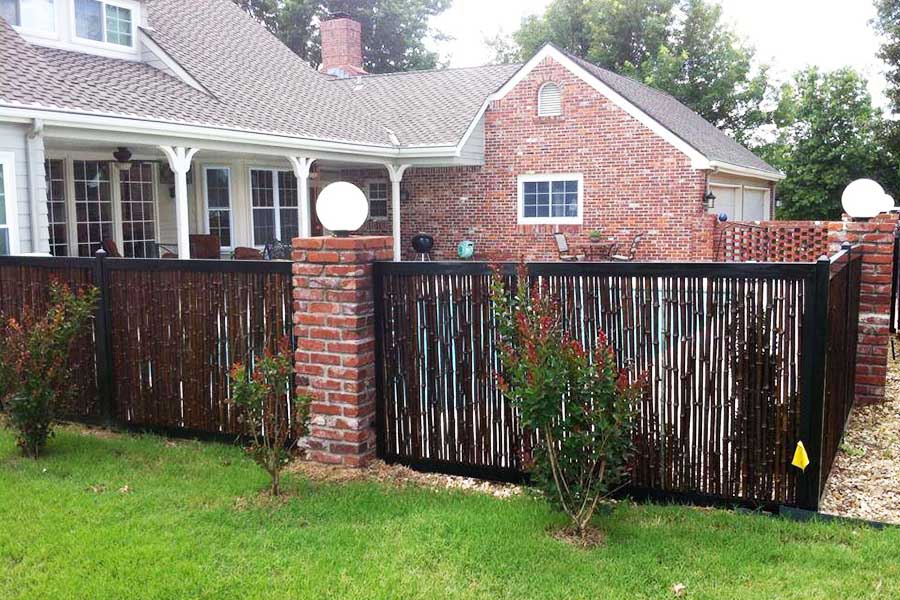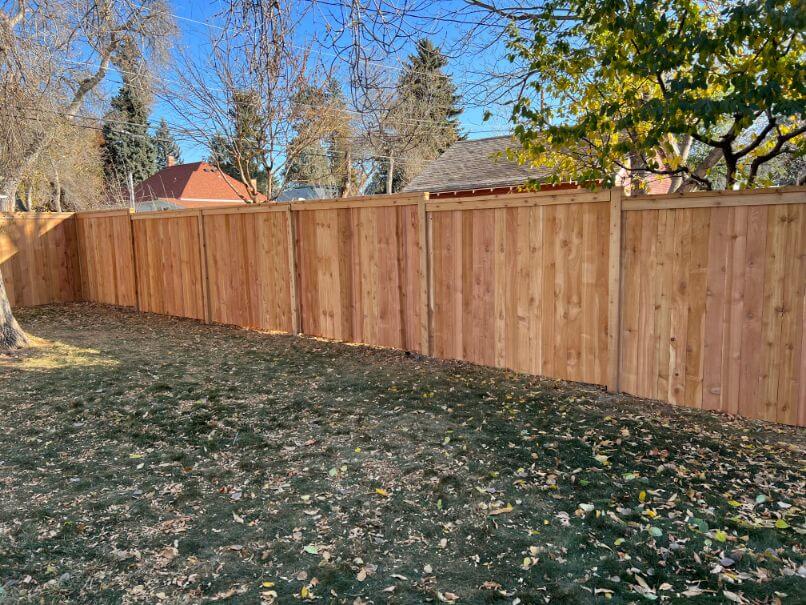All Categories
Featured
When it pertains to maintaining a wood fence, house owners often face the decision of whether to stain or paint. Both alternatives have their disadvantages and pros, and the option ultimately depends on your aesthetic choices, the sort of timber, and just how much maintenance you agree to dedicate to. Below's an in-depth comparison to assist you make an informed choice.
The Fundamentals of Paint and Discoloration
Painting involves covering the wood with a nontransparent layer of shade. It supplies complete protection, concealing the timber grain while using superb defense against ecological components.
Discoloring permeates the timber, improving its all-natural elegance while adding a protective layer. Depending upon the type, stains can range from transparent to strong, permitting differing degrees of wood grain presence.
Benefits And Drawbacks of Paint
Pros:
Large Range of Colors: Paint offers unlimited color choices, enabling you to match your fence to your home's outside or personal design.
Longer Lasting: Top quality outside paint can last approximately 5-7 years, needing much less regular reapplication.
Superior Defense: Paint forms a thick, solid obstacle against dampness, UV rays, and parasites.
Disadvantages:
Peeling Off and Splitting: In time, paint can peel or fracture, specifically in areas with extreme weather.
Hides Natural Timber Appeal: If you love the all-natural grain of wood, paint might not be the very best selection.
Greater Upkeep: Repainting requires scuffing off the old paint, which can be labor-intensive.
![]()
Pros and Disadvantages of Discoloration
Pros:
All-natural Appearance: Spots maintain and enhance the all-natural charm of the wood, making it suitable for top notch lumber like cedar or redwood.
Less Complicated to Reapply: Unlike paint, spots don't peel or break. Reapplying tarnish commonly requires much less surface preparation.
Versatile End Up Choices: Stains can be found in clear, semi-transparent, and strong selections, supplying different degrees of protection.
Disadvantages:
![]()
Much Shorter Life-span: Spots, especially transparent and semi-transparent ones, might require reapplication every 2-3 years.
Limited Color Choices: While discolorations provide natural tones, they do not have the broad shade combination available with paint.
Much Less Protective: Spots pass through the timber however do not give as thick a barrier as paint, making them a little less protective versus severe weather condition.
Factors to Think About
Visual Preferences: If you desire vivid colors and total insurance coverage, paint is the means to go. For a rustic and all-natural appearance, go with tarnish.
Timber Type: Top quality woods with gorgeous grains gain from discoloration, while lower-grade woods can be repainted for a sleek look.
![]()
Climate: In wet or humid climates, paint's thicker obstacle might provide better protection. In dry or modest environments, spots can be sufficient.
Maintenance Dedication: Paint includes less constant reapplication yet even more effort during touch-ups. Discoloration needs routine maintenance yet is much easier to handle.
Final Thoughts
Both painting and staining can efficiently secure and enhance your wooden fencing. The very best alternative depends upon your top priorities, whether they lean towards appearances, sturdiness, or simplicity of maintenance. By comprehending the benefits and disadvantages of each, you can pick the finish that straightens with your requirements and guarantees your fencing continues to be a standout attribute of your home for years to find.
The Fundamentals of Paint and Discoloration
Painting involves covering the wood with a nontransparent layer of shade. It supplies complete protection, concealing the timber grain while using superb defense against ecological components.
Discoloring permeates the timber, improving its all-natural elegance while adding a protective layer. Depending upon the type, stains can range from transparent to strong, permitting differing degrees of wood grain presence.
Benefits And Drawbacks of Paint
Pros:
Large Range of Colors: Paint offers unlimited color choices, enabling you to match your fence to your home's outside or personal design.
Longer Lasting: Top quality outside paint can last approximately 5-7 years, needing much less regular reapplication.
Superior Defense: Paint forms a thick, solid obstacle against dampness, UV rays, and parasites.
Disadvantages:
Peeling Off and Splitting: In time, paint can peel or fracture, specifically in areas with extreme weather.
Hides Natural Timber Appeal: If you love the all-natural grain of wood, paint might not be the very best selection.
Greater Upkeep: Repainting requires scuffing off the old paint, which can be labor-intensive.

Pros and Disadvantages of Discoloration
Pros:
All-natural Appearance: Spots maintain and enhance the all-natural charm of the wood, making it suitable for top notch lumber like cedar or redwood.
Less Complicated to Reapply: Unlike paint, spots don't peel or break. Reapplying tarnish commonly requires much less surface preparation.
Versatile End Up Choices: Stains can be found in clear, semi-transparent, and strong selections, supplying different degrees of protection.
Disadvantages:

Much Shorter Life-span: Spots, especially transparent and semi-transparent ones, might require reapplication every 2-3 years.
Limited Color Choices: While discolorations provide natural tones, they do not have the broad shade combination available with paint.
Much Less Protective: Spots pass through the timber however do not give as thick a barrier as paint, making them a little less protective versus severe weather condition.
Factors to Think About
Visual Preferences: If you desire vivid colors and total insurance coverage, paint is the means to go. For a rustic and all-natural appearance, go with tarnish.
Timber Type: Top quality woods with gorgeous grains gain from discoloration, while lower-grade woods can be repainted for a sleek look.

Climate: In wet or humid climates, paint's thicker obstacle might provide better protection. In dry or modest environments, spots can be sufficient.
Maintenance Dedication: Paint includes less constant reapplication yet even more effort during touch-ups. Discoloration needs routine maintenance yet is much easier to handle.
Final Thoughts
Both painting and staining can efficiently secure and enhance your wooden fencing. The very best alternative depends upon your top priorities, whether they lean towards appearances, sturdiness, or simplicity of maintenance. By comprehending the benefits and disadvantages of each, you can pick the finish that straightens with your requirements and guarantees your fencing continues to be a standout attribute of your home for years to find.
Latest Posts
Why Chicago Drivers Trust Montclare Auto Repair for Dependable Service and Significant Savings
Published en
1 min read
Explore Special Auto Repair Specials in Chicago at Montclare Auto Repair
Published en
1 min read
Explore the Leading Auto Repair Discounts in Montclare, Chicago
Published en
1 min read
More
Latest Posts
Why Chicago Drivers Trust Montclare Auto Repair for Dependable Service and Significant Savings
Published May 26, 25
1 min read
Explore Special Auto Repair Specials in Chicago at Montclare Auto Repair
Published May 25, 25
1 min read
Explore the Leading Auto Repair Discounts in Montclare, Chicago
Published May 24, 25
1 min read